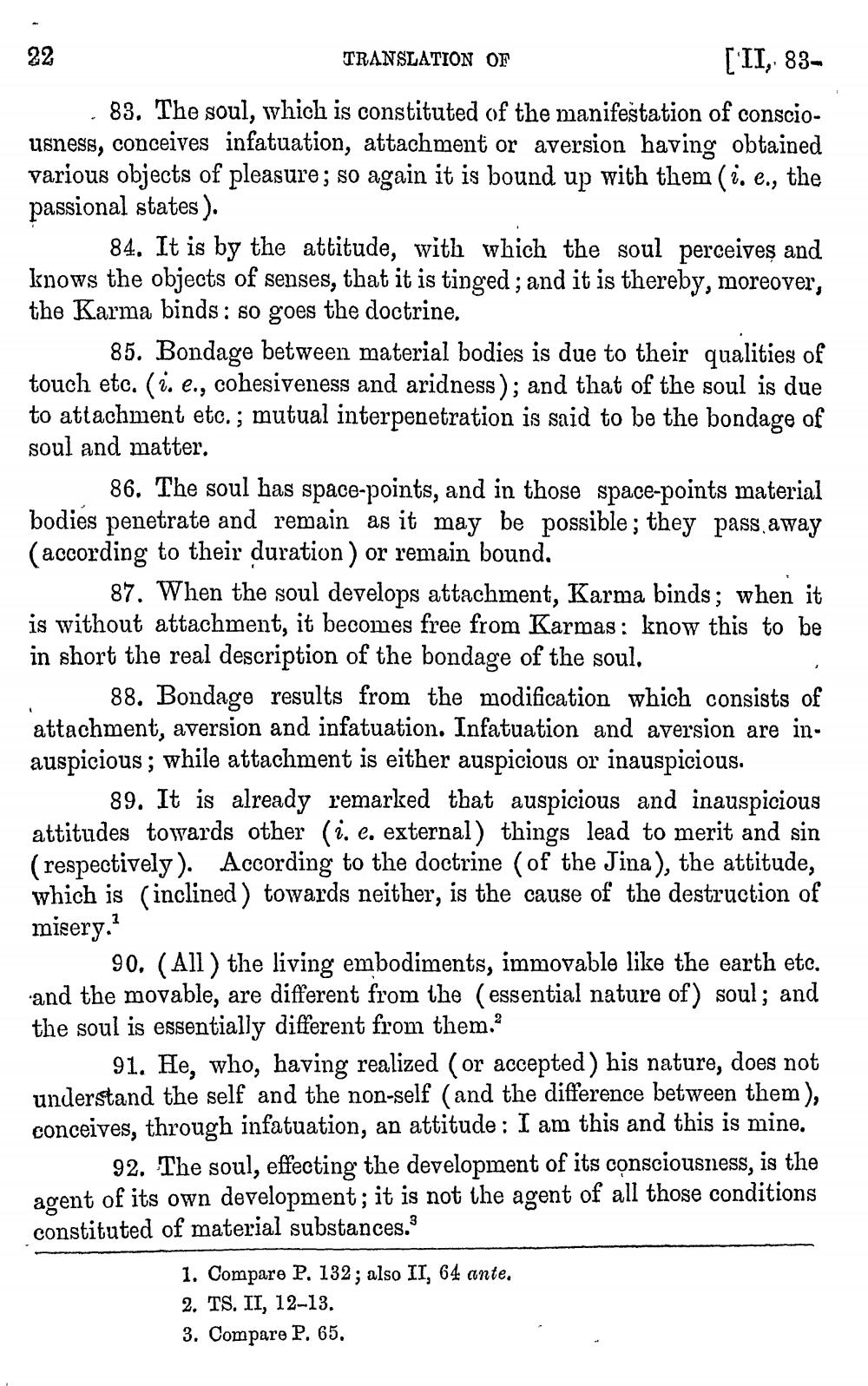________________
TRANSLATION OF
[II, 8383. The soul, which is constituted of the manifestation of consciousness, conceives infatuation, attachment or aversion having obtained various objects of pleasure ; so again it is bound up with them (i. e., the passional states).
84. It is by the attitude, with which the soul perceives and knows the objects of senses, that it is tinged; and it is thereby, moreover, the Karma binds: so goes the doctrine.
85. Bondage between material bodies is due to their qualities of touch etc. (i. e., cohesiveness and aridness); and that of the soul is due to attachment etc.; mutual interpenetration is said to be the bondage of soul and matter.
86. The soul has space-points, and in those space-points material bodies penetrate and remain as it may be possible; they pass away (according to their duration ) or remain bound.
87. When the soul develops attachment, Karma binds; when it is without attachment, it becomes free from Karmas: know this to be in short the real description of the bondage of the soul.
88. Bondage results from the modification which consists of attachment, aversion and infatuation. Infatuation and aversion are inauspicious; while attachment is either auspicious or inauspicious.
89. It is already remarked that auspicious and inauspicious attitudes towards other (i. e. external) things lead to merit and sin (respectively). According to the doctrine (of the Jina), the attitude, which is (inclined) towards neither, is the cause of the destruction of misery."
90. (All) the living embodiments, immovable like the earth etc. and the movable, are different from the essential nature of) soul; and the soul is essentially different from them.”
91. He, who, having realized (or accepted) his nature, does not understand the self and the non-self (and the difference between them), conceives, through infatuation, an attitude: I am this and this is mine.
92. The soul, effecting the development of its consciousness, is the agent of its own development; it is not the agent of all those conditions constituted of material substances.
1. Compare P. 132; also II, 64 ante. 2. TS. II, 12–13. 3. Compare P. 65.




